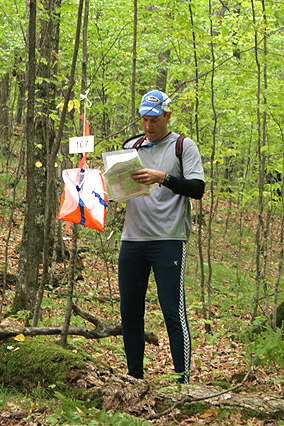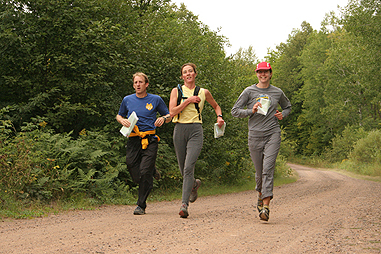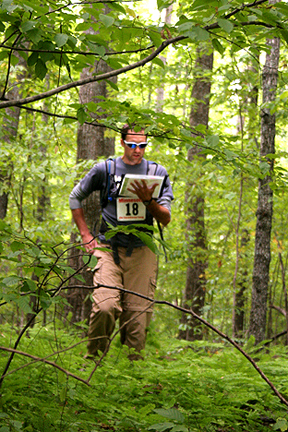By STEPHEN REGENOLD
We were chest deep in swamp water, feet sinking in muck, when my teammate, Todd Peterson, yelled from behind: “Is this gonna be a swim?”
I was hoping not. On my map the swamp, a hatch-marked smudge west of Anodanta Lake, had materialized as a shortcut route through the forest. We were looking for an orange-and-white nylon marker — control flag No. 5 — heading due west in an orienteering race that’d been bouncing us through the woods all day.
It was 2:30 p.m., five hours into the Minnesota Orienteering Club’s annual Rogaine event, a map-and-compass race held in the Chequamegon National Forest of northwest Wisconsin. Peterson and I were among the 30 teams that’d set out that morning in search of two-dozen flags scattered throughout the forest.

Topo maps with pre-marked flag locations and a compass are your sole navigational tools on a Rogaine — no GPS allowed.
“Sinking!” I yelled back in warning, water now at my chin. Cattails on the far bank were fading from sight. I held my backpack high and lurched on.
The sport of rogaining, an Australian offshoot of orienteering invented in the 1970s, puts teams of two to four people on a choose-your-own-adventure course in wilderness dotted with flags. (Rogaining has no connection to Rogaine, an anti-baldness drug made by Pfizer Inc.; it is a combination of Rod, Gail and Neil, three Australian athletes credited with popularizing the sport.)
Topographical maps are pre-marked with flag locations; a compass serves as your sole navigational tool, no GPS allowed. You chart a course and tag the control flags in any order, imprinting a punch card at each flag to prove you were there.
The team with the most punched points in the end wins.
But finding the flags — most placed far off trail in little woodsy nooks, on spurs or subtle creek bends, and in deep ravines choked with brush — is only one crux of the sport.
Indeed, rogaining requires teams to plan course strategy, navigate while running on trails or in the woods, and maintain a steady fast-hiking or jogging pace for six to 24 hours straight, the common range of rogaine events.
Wilderness savvy helps, too: On our race, Peterson and I — called “Team Gear Junkie & O Monkey” — hydrated with water from a stream, which we purified on the go; shouldered small packs with gear and food; and ran nearly 20 miles through all type of terrain, leaping logs, crashing through thorns, ducking limbs, crossing creeks — bushwhacking constantly at high speed, at least when we weren’t swimming through a swamp.










